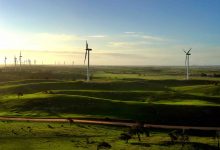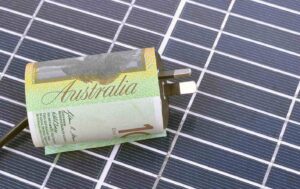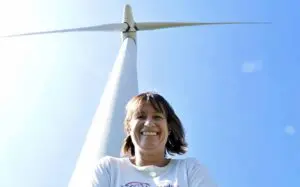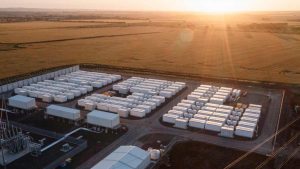South Australia has an ambition to reach “net 100 per cent renewables” by 2030, but the reality is that it will get there several years before that, perhaps as early as 2026 when the new transmission link to NSW is fully commissioned.
But the state already has a glimpse of what a “net 100 per cent renewables” grid might look like, and particularly in the past week when it averaged 99.8 per cent renewables (as a share of its local demand) up to 9.30 am (grid time, of AEST) on Friday.
There are a couple of things to observe about this. First, it is “net” renewables because South Australia is connected to another grid (Victoria), so it can export some of its surplus power when needed, and import some too.
Secondly, South Australia is unique in that its share of renewables – 71.5 per cent of the past 12 months, 86.6 per cent in the last 30 days, and 99.8 per cent in the last seven days – comes from wind and solar only: The state has no hydro, and no geothermal, and no biomass power to speak of.
Thirdly, although South Australia has previously reached higher levels of renewables over a week-long period, this is the first time since new protocols were introduced that allows synchronous condensers to provide the bulk of system strength and allows gas fired power stations to be dialled back to minimum levels.

This is what that looks like. Vast amounts of solar in the daytime hours, wind dominating when it is dark, and a thin orange line illustrating the small role that gas is now playing – apart from the times when low wind output obliged the state to switch on more gas plants and import from Victoria.
Wind dominated and met 56.1 per cent of local demand throughout the 148 hour period, with rooftop solar providing a further 23.4 per cent, and dominating during the day-time hours.
Utility scale solar contributed just 4.2 per cent, but that’s because the bulk of its 450MW of installed large scale solar capacity in the state was curtailed most of the time by negative prices.
So the “potential” renewables was significantly higher than “net” 100 per cent renewables, underlining the case for more storage, the 250MW of hydrogen electrolysers that are being funded by the state government, the new transmission link, and demand shifting.
(The “potential” renewables actually hit a new peak of 264 per cent of state demand last Saturday).
Overall, however, South Australia exported more than three times more electricity than it imported (35 GWh verses 10 GWh), and battery storage also played a growing role, particularly with the addition of the newly commissioned 250MW Torrens Island battery.
It contributed nearly as much at peak times as the peaking gas generators, even though the big batteries in the state have, at most, two hours storage and most only one hour or 1.5 hours.
The Torrens Island battery is likely to be expanded to four hours storage as the market evolves further and more of the gas generators originally built to back up the coal fired power stations now closed are phased out of the systems).

As a side note, the share of renewables across the entire National Electricity Market over the same period was 47.4 per cent, with wind and solar alone providing 41.2 per cent. Over the past year, the share of renewables has grown to 38.6 per cent, still well short of the federal government target of 82 per cent by 2030.
See also: South Australia takes another bold leap into deep green energy future
And our interview with state energy minister Tom Koutsantonis: Energy Insiders Podcast: South Australia’s big move into green hydrogen










